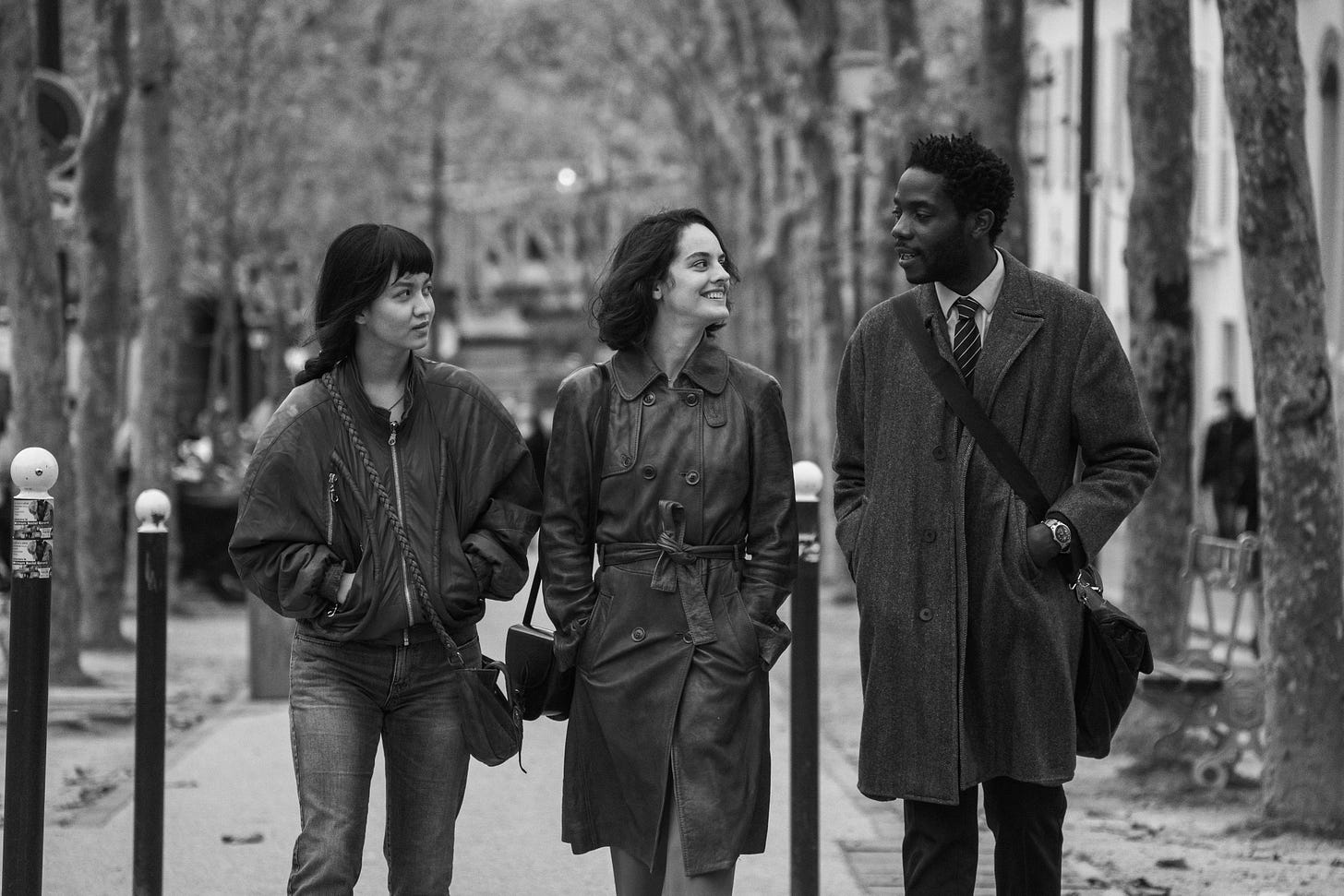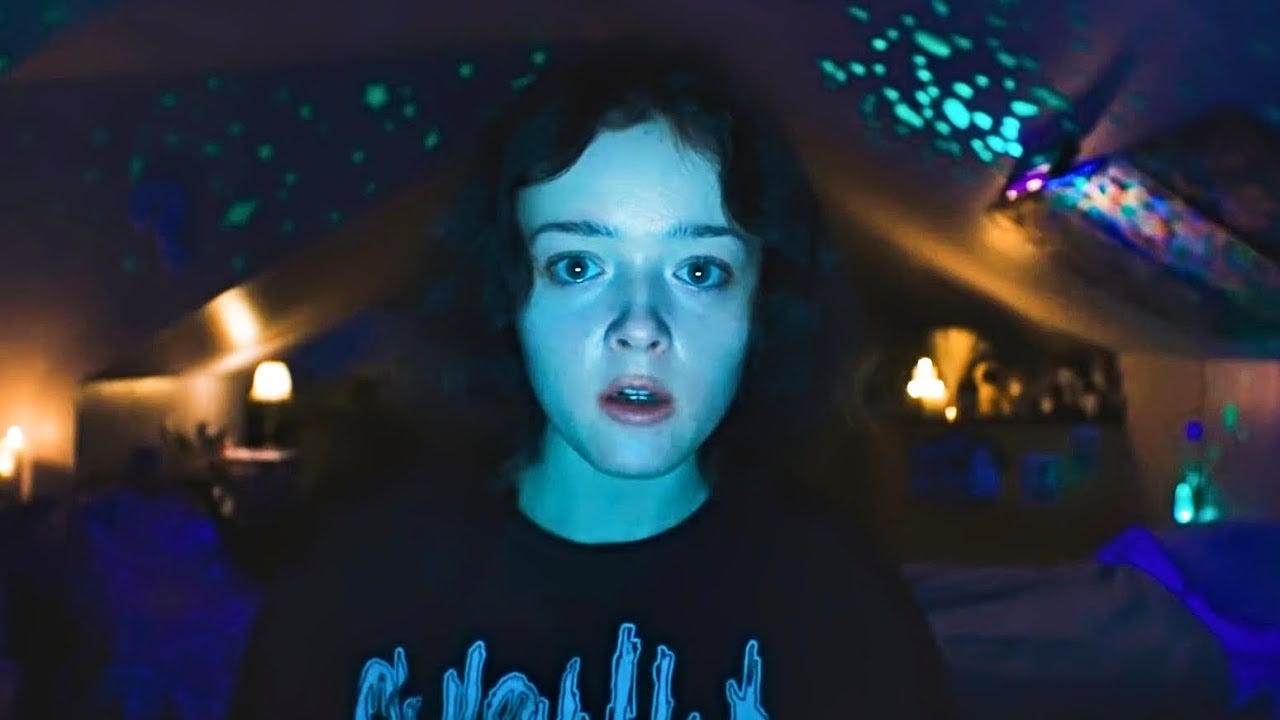In Review: 'Paris, 13th District' and 'We're All Going to the World's Fair'
The director of 'A Prophet' finds crisscrossing lives and millennial ennui in the 13th arrondissement and an indie horror film logs into the melancholy terrors of an online community.
Paris, 13th District (Les Olympiades)
Dir. Jacques Audiard
106 min.
Though it will soon focus on a handful of residents of Paris’s 13th arrondissement, Jacques Audiard’s relaxed, observational Paris, 13th District at first takes the wide view, capturing a section of the city defined by towering apartment buildings that flicker with signs of life. With their enticing illuminated flatness, the windows in these opening shots look like screens – or, maybe more aptly, given that the film adapts (and transplants) the work of American cartoonist Adrian Tomine, the panels of a comic. Peer into any of them and you’ll find a story.
Sometimes you’ll find more than one. Working from a script he co-wrote with Léa Mysius and Portrait of a Lady on Fire director Céline Sciamma, Audiard (A Prophet) examines the ways lives can intersect and overlap, diverge and reunite, particularly the lives of young, passionate, people still unsure of who they are, what they want to be, and who they want to spend their time with. These include Émilie (Lucie Zhang), who lives in an apartment owned by her grandmother, recently forced to move to a nursing home after developing dementia. To make ends meet, Émilie takes in a roommate, though she assumes that the Camille (Makita Samba) who answered her ad is a woman and not a handsome teacher with whom she’ll share an instant attraction. They fall into bed before he’s even moved in. Then the complications really begin.
Elsewhere in the arrondissement, Nora (Portrait of a Lady on Fire’s Noémie Merlant) has moved from Bordeaux to resume her studies after working in real estate for a decade. Her classmates condescend to her because of her advanced age (she’s 33) then mock her when after she hits the club because her blonde wig makes her resemble the porn star Amber Sweet (Savages singer Jehnny Beth), either mistaking her for Amber or just not caring one way or another. Humiliated, confused, and curious, Nora decides to pay the fee for a private online session with Amber, seeking conversation instead of her usual services.
Over the course of the film, the characters paths' cross, sometimes resulting in attraction, sometimes in frustration, and often in some mix of the two as Nora, Émilie, and Camille all try to determine how to maintain their freedom while exploring the pleasures of intimacy — emotional and sexual, but not always at once. Shooting in silky black and white (with one burst of color) and working with a deft cast, Audiard captures some of the same millennial ennui (and sexual frankness) of The Worst Person in the World, depicting a city — or at least a section of a city — populated by a generation still sorting through what they want out of life as they try, and often fail, not to hurt those around them in the process. —Keith Phipps
We’re All Going to the World’s Fair
Dir. Jane Schoenbrun
86 min.
For the longest time in Jane Schoenbrun’s ingenious horror film We’re All Going to the World’s Fair, the only character we see is Casey (Anna Cobb), a sad-eyed teenager who spends nearly all her time in her attic bedroom. It isn’t long until we figure out why: The exterior suggests a home with few neighbors, much less close friends, and the one time we hear from her father, he’s erupting in a terrifying fury about Casey staying up too late. And so, like many like-aged kids, the internet has become her chief outlet for connection and community, where she can share videos and explore the quirky little tributaries that branch out from her social media streams.
Though Schoenbrun has imagined a viral internet phenomenon as a mortal threat, in the tradition of other skin-crawling web-horror films like Kiyoshi Kurosawa’s Pulse and Levan Gabriadze’s Unfriended, the writer/director isn’t interested in making an alarmist cautionary tale about being Extremely Online. Yet through Casey’s disturbing ordeal, Schoenbrun engages so deeply in the feeling of being online—more specifically, the feeling of being a young woman online—that an enervating, corrosive loneliness hits harder than any life-threatening fear. It’s a generational character study disguised as a sprucing-up of a Paranormal Activity-style DIY shocker.
“Hey guys,” Casey announces straight to her web camera in a sing-song-y greeting so common to YouTube and TikTok channel hosts, though she spares any additional pleas to “like and subscribe”—maybe because she doesn’t have enough followers to care. She announces that she’s going to take “the World’s Fair challenge,” which turns out to be decidedly more taxing on the psyche than, say, a multiple-choice quiz on Devil in the White City. Much like the Ice Bucket Challenge, this “Scariest online horror game” requires filming reaction videos and trying to get others involved, but it’s a long-term project with an uncertain ending, all built on a double-dog dare. First, she must prick herself repeatedly at the tip of her right index finger with a pin and watch a strobing-light video with a guttural voice doing the narration. Her job in subsequent videos is to report what has happened to her after.
By taking the challenge, Casey becomes part of a cool-seeming subculture of horror enthusiasts, and she attracts one of them in particular, “JLB” (Michael J. Rogers), a much older man whose interest in her may or may not be friendly. The fact that Casey is left to suss out JLB’s intentions—and that Schoenbrun keeps them ambiguous for so long—beautifully encapsulates the backwards way of meeting a person online, where it’s so much harder to intuit what they’re actually like. When the challenge does start to fuck her up a bit, she needs someone to trust, and JLB, the scary-seeming avatar who wants to help, makes her situation that much more unsettling.
Schoenbrun exploits the video-horror style to fine effect, but We’re All Going to the World’s Fair distinguishes itself most as a tone piece about internet culture, an immersive doomscroll with an emphasis on “doom.” The film’s unforgettable centerpiece involves Casey trying to settle herself to sleep with a projected ASMR video, but there’s also a strong cumulative impact to watching her click her way down the rabbit hole. Anyone who spends a lot of time online knows what it’s like to follow such digital breadcrumbs, but now they lead deeper into the forest and farther away from home. — Scott Tobias









should we assume your Thursday In Review section is about theatrical releases unless you specify otherwise? I ask because I read these and then immediately wondered: where can I see these?
Loved 13th District! The score by Rone was phenomenal, perfectly captures the zeitgeist of questionably-sincere digital relationships.